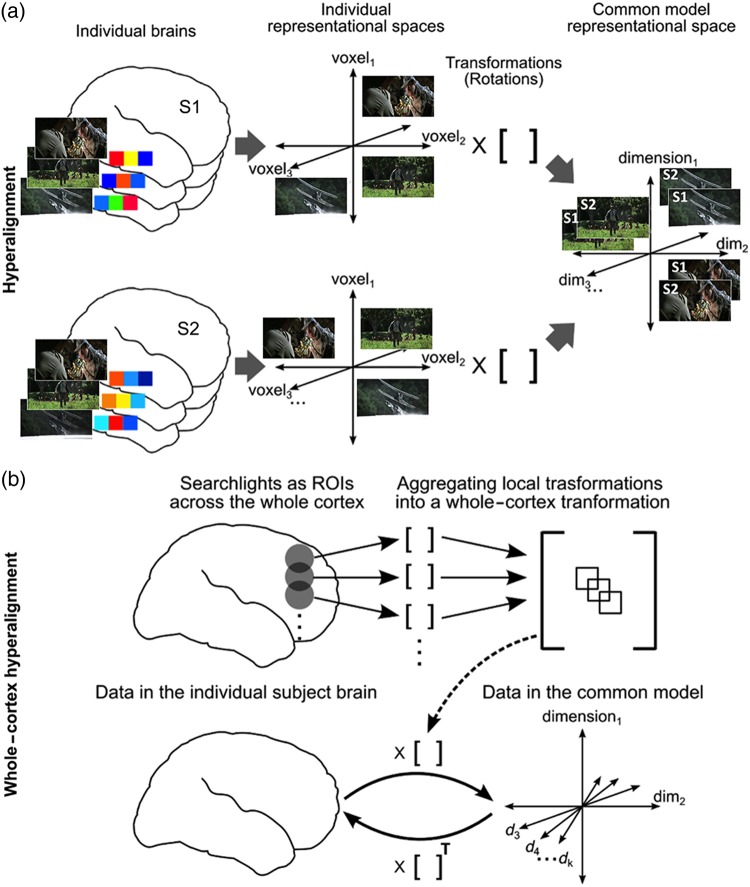Figure 1.
Schematic of whole-cortex searchlight hyperalignment. (a) Hyperalignment aligns neural representational spaces of ROIs in individual subjects’ into a common model space of that ROI using rotation in a high-dimensional space. The Procrustes transformation finds the optimal orthogonal transformation matrix to minimize the distances between response vectors for the same movie timepoints in different subjects’ representational spaces. An individual subject's transformation matrix rotates that subject's anatomical space into the common space and can be applied to rotate any pattern of activity in that subject's brain into a vector in common space coordinates. (b) Searchlight hyperalignment aligns neural representational spaces in all cortical searchlights. Local searchlight transformation matrices are then aggregated into a single matrix for each subject. Each subject's whole-cortex transformation matrix maps any data from that subject's cortex into the common model space. The transpose of that matrix maps any data from the common model space into individual subject's cortex. Dimensions in the common space have common tuning basis functions, as documented by increased ISC of movie fMRI time series (Supplementary Fig. 1), and individual-specific topographic basis functions (Supplementary Fig. 2).

